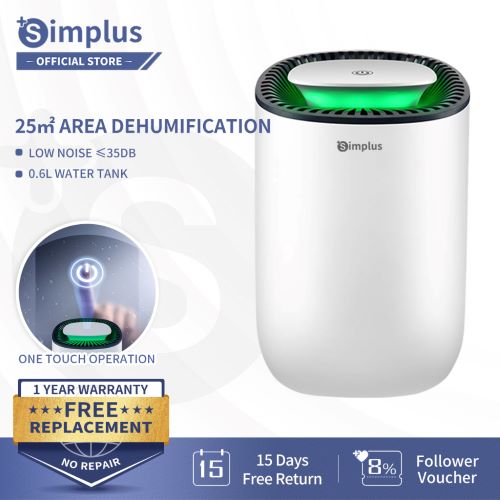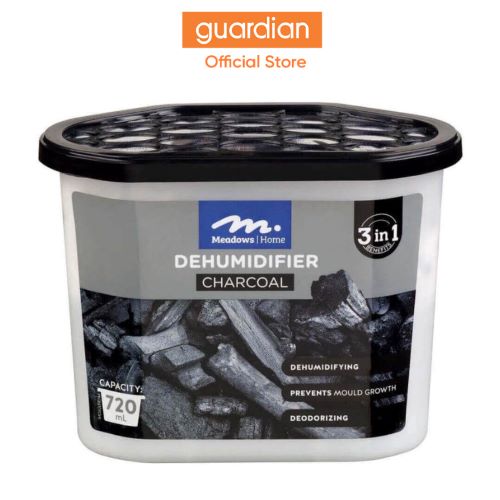Have you ever thought about what dehumidifiers even do?
Don’t they just shoot air out and take up a lot of space?
In reality, dehumidifiers do a lot more than just spit out air, they can improve your overall standard of living.
Imagine a house free from allergens, mould, and pests, with cool, dry air.
All this is very much possible with the use of dehumidifiers!
Better Deep Sleep😴
How does a dehumidifier affect your sleep?
By removing excess moisture from the air, a dehumidifier creates a cool and dry environment that promotes restful sleep, making it easier to nod off and stay asleep throughout the night.
Giving you and your family the deep sleep needed to help feel energised in the morning.
Health Benefits Of Dehumidifiers
For those with allergies or respiratory issues, a dehumidifier is a game-changer.
Mould not only looks unsightly but can also be harmful to health.
Mould can trigger nasal congestion, sneezing, coughing, wheezing, respiratory infections and worsen asthma and allergic conditions.
Dust mites, mould, and mildew all thrive in high humidity.
But with a dehumidifier, you can reduce these allergens significantly, leading to less sneezing, coughing, and overall discomfort.
A dehumidifier keeps moisture levels in check and creates an environment that is less hospitable to allergens and harmful mould.
By preventing the growth of mould and reducing allergens, it can alleviate symptoms of allergies and improve overall respiratory health.💪
What About Alternatives?
People often use humidifiers and air purifiers as an alternative to dehumidifiers, as humidifiers can also help maintain the humidity in the air and air purifiers are portable devices that combine to filter out unwanted particles from the air.
However, when it comes to controlling room humidity, dehumidifiers are the superior choice.
Unlike humidifiers or air purifiers, dehumidifiers tackle the root cause of high humidity, creating a comfortable and healthy environment.
The Magic of Dehumidifiers
No, dehumidifiers do not have a magical wizard inside shooting cool dry air at you, they draw in warm air, remove moisture through their coils, and release cooler, drier air back into your room.
Do I Need A Dehumidifier?
How do you know if you need a dehumidifier?
Look out for signs like musty smells, persistent dampness, or an increase in respiratory symptoms.
These are common ways to tell if you need a dehumidifier in your house or room.
Maintaining indoor humidity levels between 30% to 50% is ideal for a healthy home environment.
Dehumidifier Galore
There are 2 main types of dehumidifiers: Refrigerant and Desiccant.
Each has a different method of collecting the moisture as outlined below and knowing the difference will help you decide which one is best for you.
Refrigerant Dehumidifiers
A refrigerant dehumidifier uses the same process as your fridge at home.
The refrigeration process cools a metal plate on which moisture from the air condenses.
A fan constantly draws the room air through the dehumidifier and over the cool metal plate as more of the moisture condenses onto the plate and drips into the dehumidifier’s water tank.
This reduces humidity to a normal level and the Refrigerant Dehumidifier will then switch itself to standby until such a time as it is required again.
An example of such a dehumidifier would be the Simplus Dehumidifier, which uses Thermo-Electric Peltier Tech similar to the refrigerant and is reasonably priced at S$46.90

Simplus Dehumidifier 600ml Auto-shutoff Low Noise Easy Operation Energy-saving | Shopee Singapore
Refrigerant dehumidifiers are most effective at typical room temperatures and their performance declines dramatically in cooler conditions.
A refrigerant dehumidifier can operate effectively at lower temperatures but requires higher-performing components and additional features to achieve this, making it more expensive.
So if you think your dehumidifier may often be used in a room which often has a fairly low temperature then this may not be the best option.
Desiccant Dehumidifiers
Meanwhile, Desiccant Dehumidifiers absorb water from the air using a desiccant, a material that absorbs water, identical to silica gel packs.
In a Desiccant Dehumidifier, a wheel consisting largely of the desiccant turns slowly with the incoming air stream and absorbs moisture.
The condensed water is then collected in the dehumidifier’s collection tank. This type of dehumidifier tends to be smaller and lighter than the refrigerant type.
The Main reason to Choose a desiccant dehumidifier is that it can operate at much lower temperatures than a refrigerant type.
However, Desiccant dehumidifiers are by default power hungry and the technology is still quite unreliable.
Charcoal Dehumidifiers
But if you are looking for a cheaper and convenient alternative, a charcoal dehumidifier is a good substitute, they are just as effective in smaller rooms and they can also be made by yourself!
An example of such a product would be Meadows Dehumidifier Charcoal.

Meadows Dehumidifier Charcoal 3X720Ml | Shopee Singapore
Don’t let high humidity ruin your sleep and health, invest in a dehumidifier today and say goodbye to allergens, mould, and restless nights.
Related to:
Top 10 Gadgets to buy on Shopee: April 2024
2024 Hair Salon Guide: Top 8 Products Every Hairdresser Must Have






